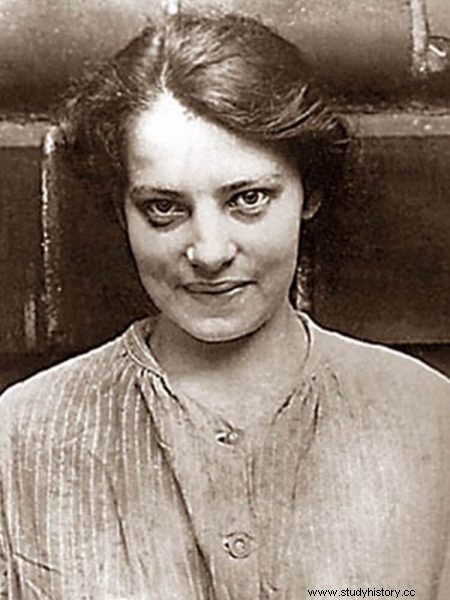In 1920 a girl appeared in Berlin claiming to be the miraculously surviving daughter of Tsar Nicholas II. She allegedly survived the execution and made it from Russia to Germany. The alleged princess had as many supporters as opponents. But was there any truth to her story?
The fate that befell Nicholas II and his family had little to do with the humanitarian (if one can talk about it at all) execution. On the night of July 16-17, 1918, in the basement of Ipatiev's house in Yekaterinburg, the Chekists organized a bloodbath for the tsar, his wife and five children .
The floor of the room was slippery with body fluids and bits of bayonet-chopped bodies. Nobody seemed to have the right to come out of it alive. But are you sure?
80 Faces of Princess Anastasia
Lenin ordered that the tragic end of the last Romanovs be kept secret. However, it was impossible to keep everything a secret - especially since the inhabitants of Yekaterinburg heard shots on the night of the execution of the death sentence and noticed that the residence was deserted overnight.
The Bolsheviks feared the public reaction to the news of the brutal murder of the tsarist family. Killing a widely disliked monarch is one thing, after all , but the murder of Tsarina Alexandra Fiodorovna (German, and in addition Queen Victoria's granddaughter), her four young and beautiful daughters and the ailing, minor heir to the throne, is a completely different matter.

Anna Anderson pictured in 1920.
So the bet was on… disinformation. The propaganda campaign gave great results. As Iwona Kienzler writes in her latest book Mysterious deaths of rulers:"the mother of the tsar, Maria Fyodorovna, who managed to get out of Russia and live in Denmark, still ten years after Mikołaj's death believed that her son was alive".
At the same time, rumors were buzzing all over Europe. And along with the reports of the miraculous saving of one of Mikołaj's children there were also scammers who claimed that Romanovs had blood in their veins . Most often they claimed to be Tsarevich Alexei or the tsar's youngest daughter, Anastasia. As the researcher of the history of the last tsar of Russia, Robert K. Messie, emphasizes:
Their stories have a common beginning:among the executioners in Yekaterinburg there was supposedly a noble man (or a few people) (...) who allowed one of the Romanovs, two, three or even the whole family. A motive that appeared in many stories was the belief in the existence of the fortune of Nicholas II, deposited in Western banks .
British scientists have calculated that around the world "found" a total of about 80 "miraculously survived" princesses. In most cases, it was obvious at first glance that they had absolutely nothing to do with the Romanovs. But there was one among them whose claims seemed justified…
Grand Duchess or great trickster?
The world heard about her for the first time in 1920. After an unsuccessful suicide attempt and several months of convalescence in a psychiatric hospital, and later in the house of Baron Arthur von Kleist, she suddenly decided to speak up. Before that, she had been stubbornly silent, muttering only in her sleep in a foreign language that was considered Russian. In the very first sentence, she amazed her guardians . She announced her name was Anastasia Nikolaevna Romanova.

She also had at least some evidence to support this declaration. First, she knew many details about the life of the tsarist family and court that only Nicholas' real daughter could know. Second, she gave a pretty plausible story of her miraculous salvation. Besides, she was deceptively similar to Anastasia - Those who had the opportunity to see photos of the young princess agreed on that. It wasn't just the color of the hair and eyes that matched, and even the disfigurement of the foot!
Of course, there were those who doubted the story of Miss Unknown, as she was initially called (herself - for the purpose of producing documents - later assumed the identity of Anna Anderson). Therefore, the would-be suicide woman was subjected to a series of tests .
To the surprise of the doubters, she passed them positively, including a graphological analysis and a meeting with her closest friend, Princess Ksenia Gregorievna. However, not everyone was convinced. The more that the girl did not speak Russian or French, and in addition to more detailed questions, she became hysterical and started screaming (she explained it with trauma). As reported by Iwona Kienzler in her book Tajemnicze death rulców:
Maria Feodorovna, the grandmother of the real Anastasia, approached the news of the miraculously saved Tsar with reserve, who sent one of her court ladies to Berlin. The woman said that the person she was introduced to was indeed very similar to the youngest daughter of Nicholas II, but could not with certainty confirm her identity . Two relatives of the alleged duchess also took a similar position - her aunt, Grand Duchess Olga, and the Prussian princess Irena.

The basement where the death sentence of Nicholas II and his family was carried out.
Who was right? In 1984, long after the death of Anna Anderson, who held the title of Grand Duchess until the end of her life and even wrote the book "I Am Anastasia," genetic testing concluded once and for all that the alleged tsar was an impostor. In fact, her name was Franciszka Szanckowska, she came from Kashubia, and she had never been to Russia.
After years of searching, archaeologists also managed to find the resting place of the Romanovs, which was confirmed by DNA analyzes . Nevertheless, there are many historians such as Vieniamin Alekseev and Marc Ferro who claim that the results were falsified and that Anastasia managed to survive. After all, her name in Greek means "risen" ...
